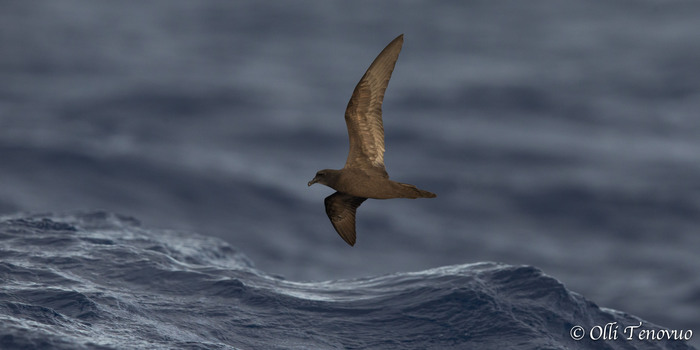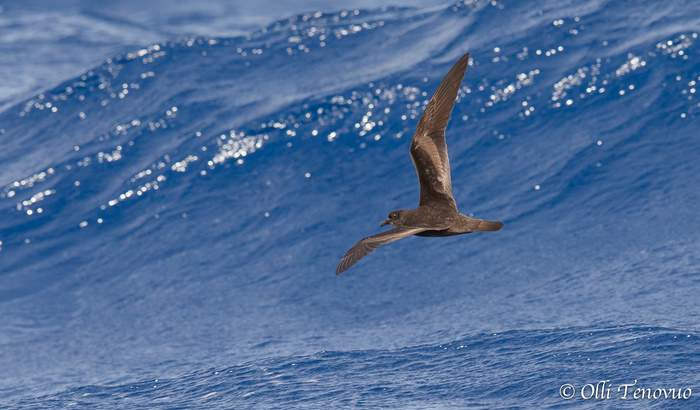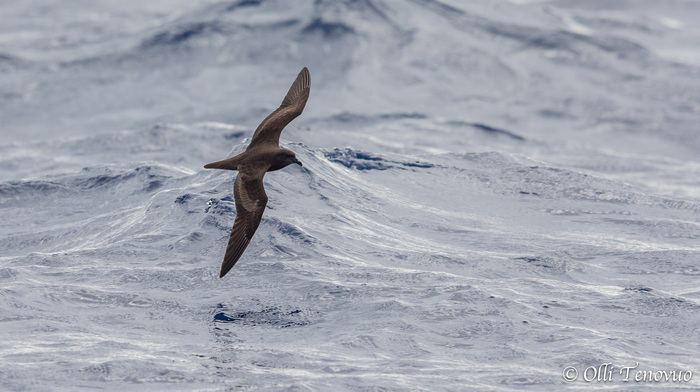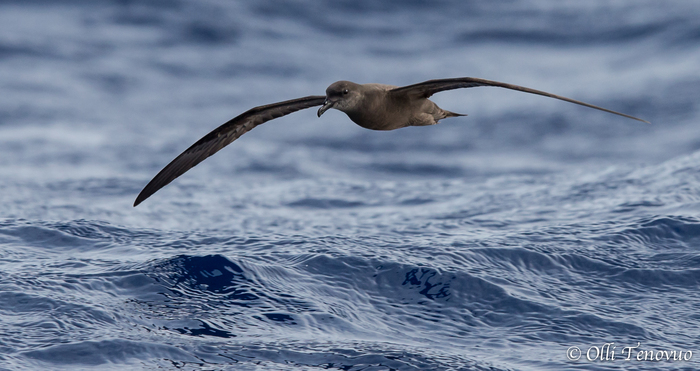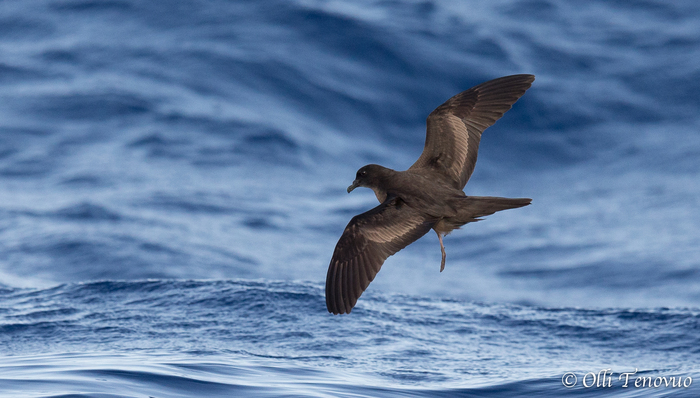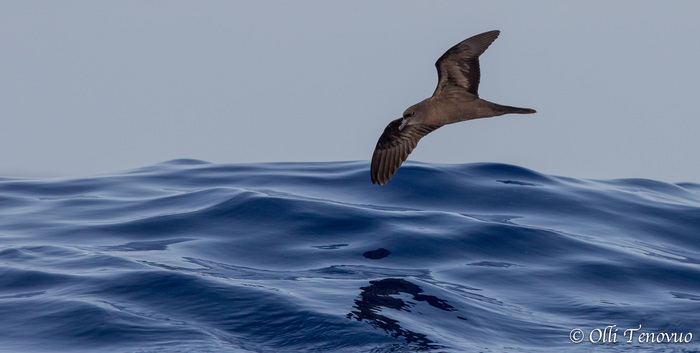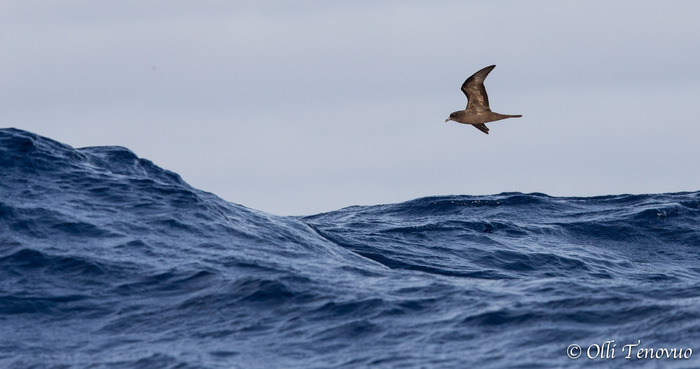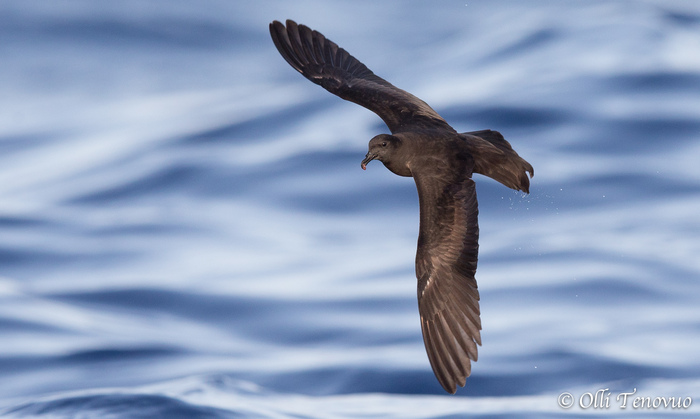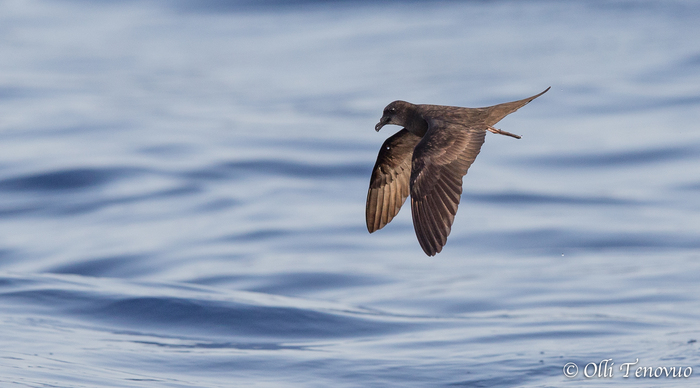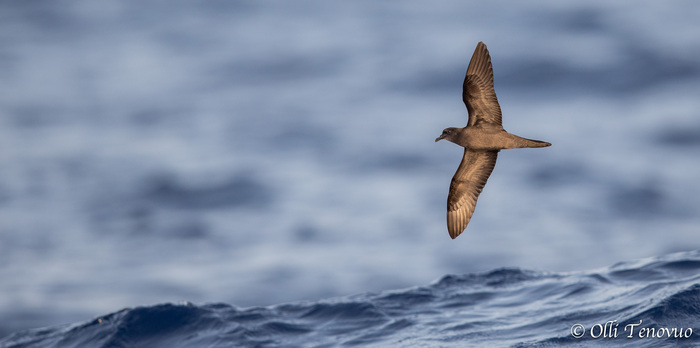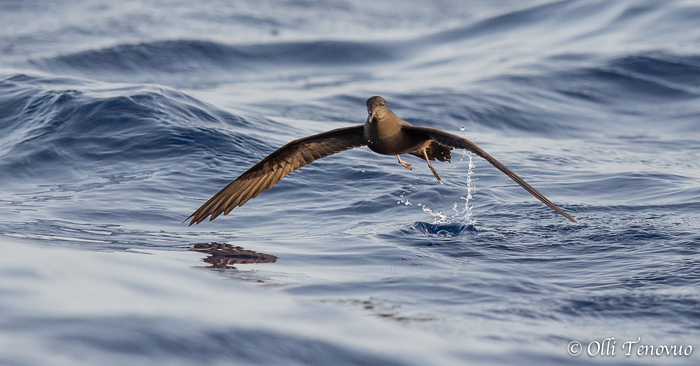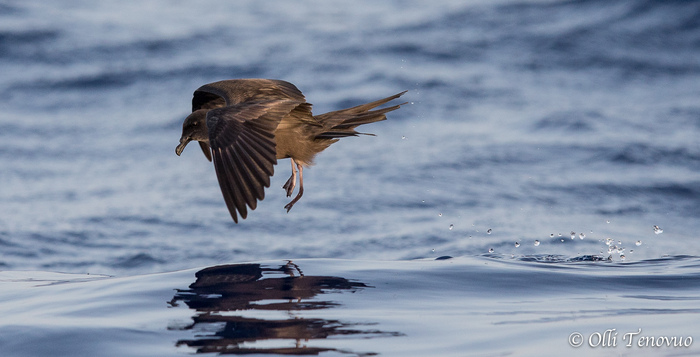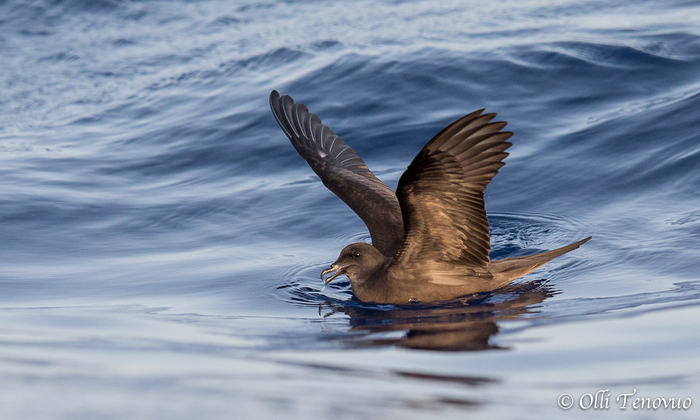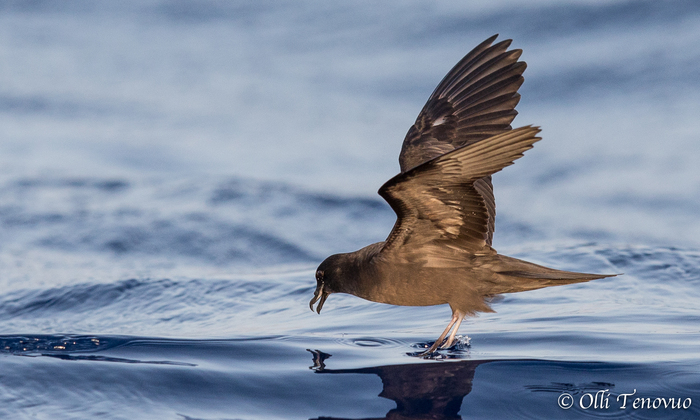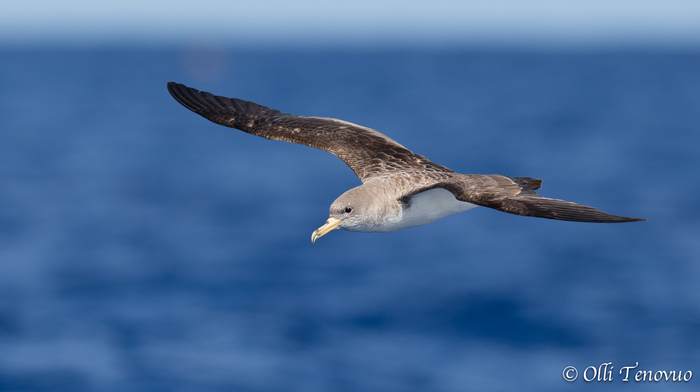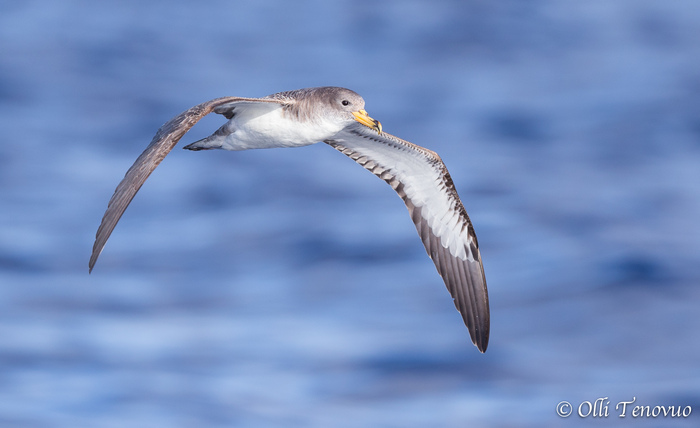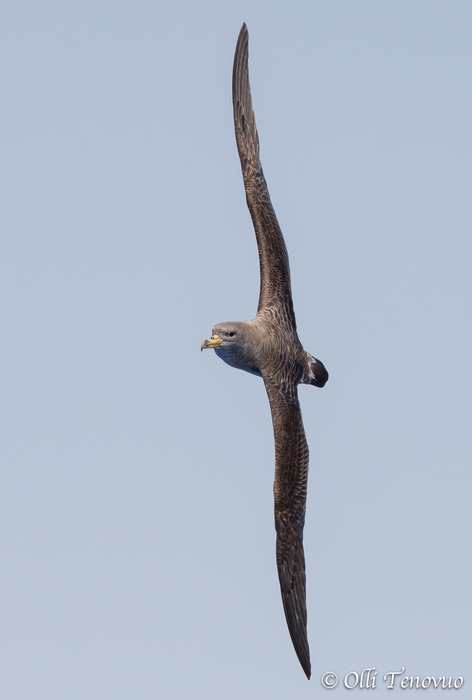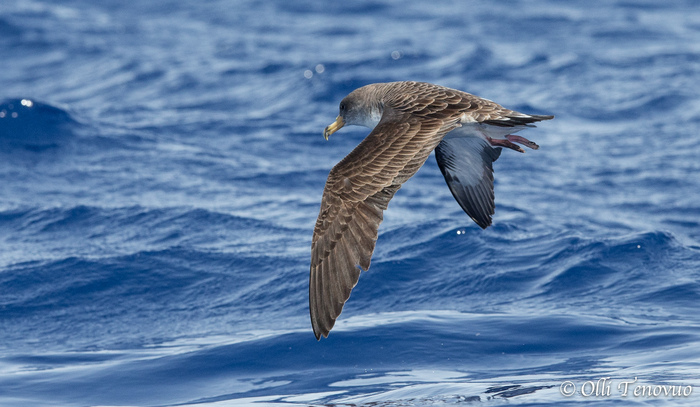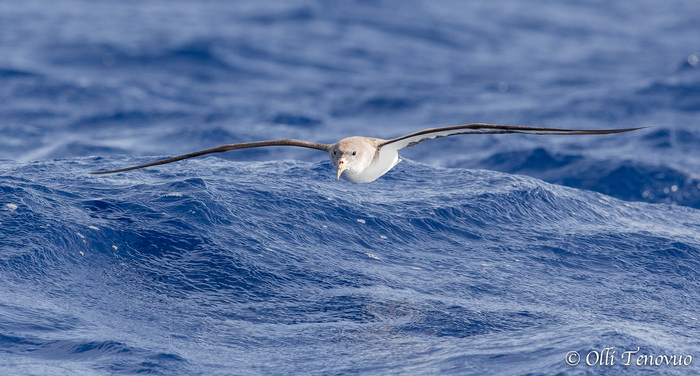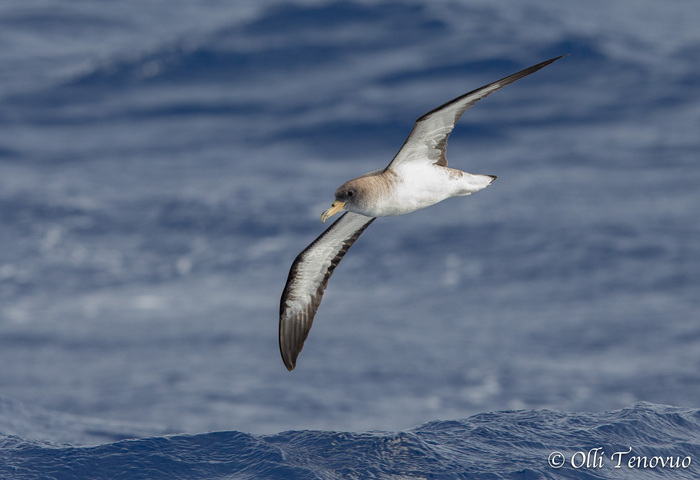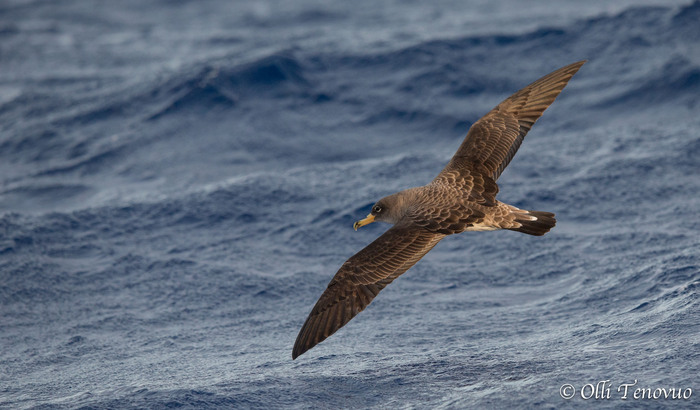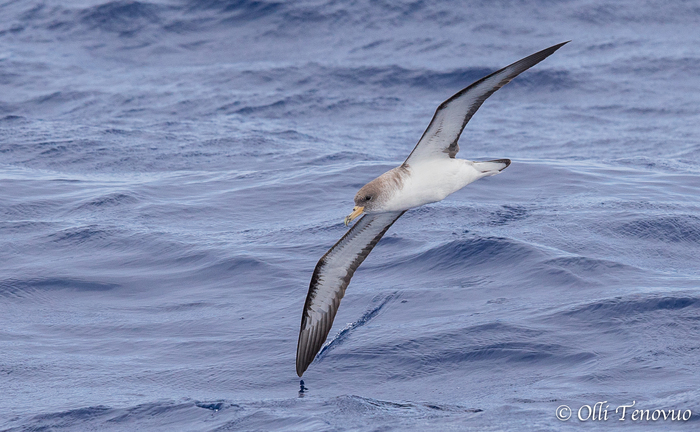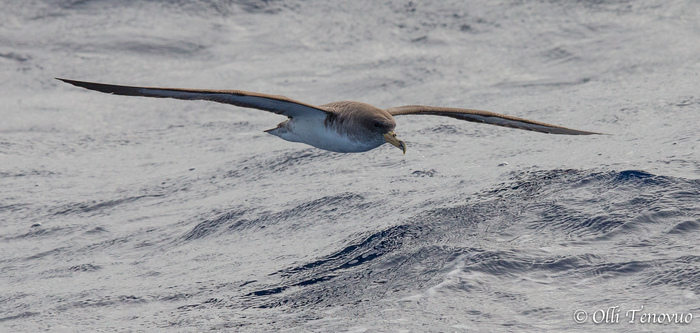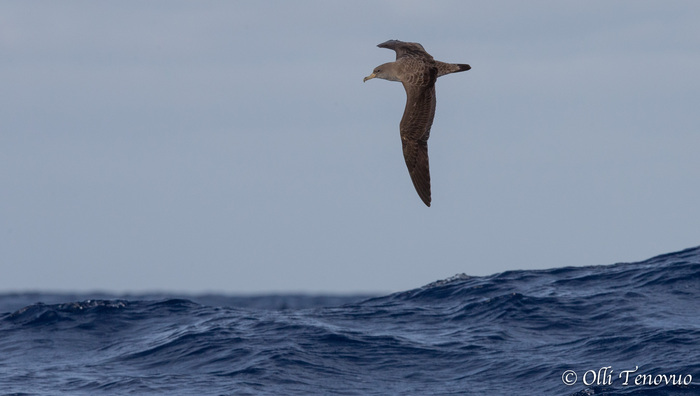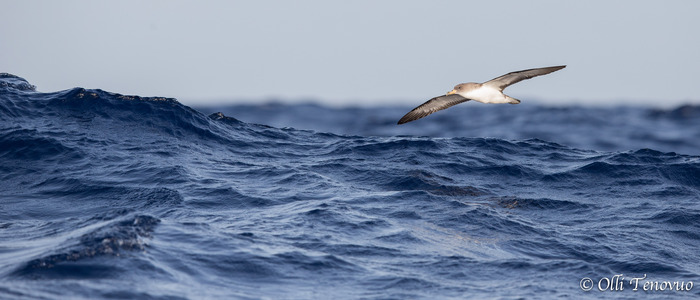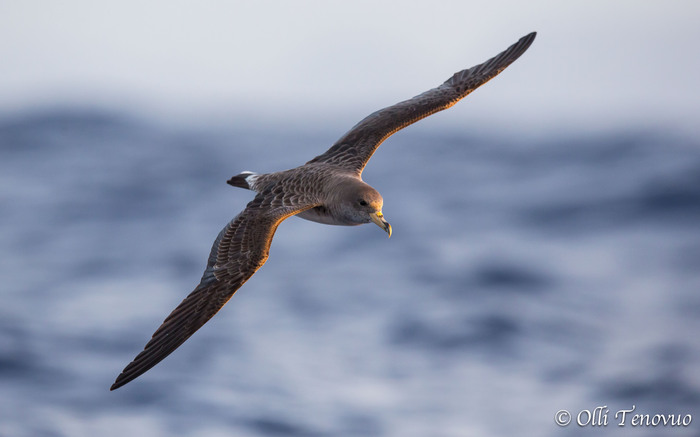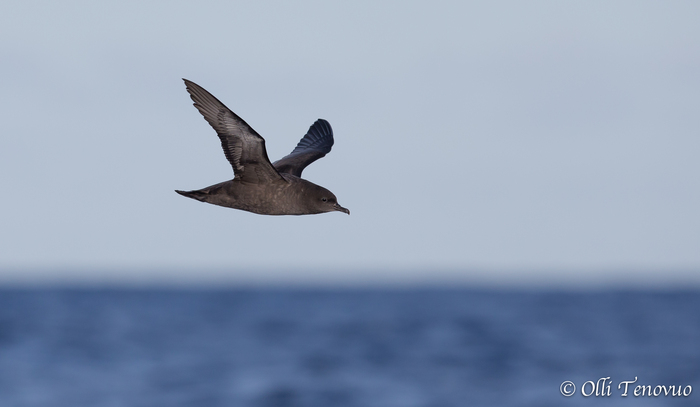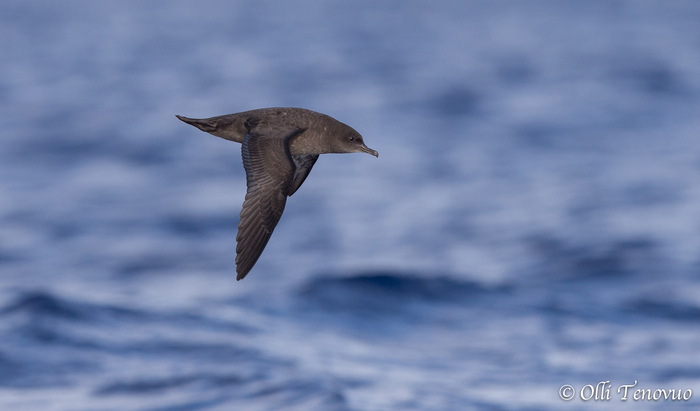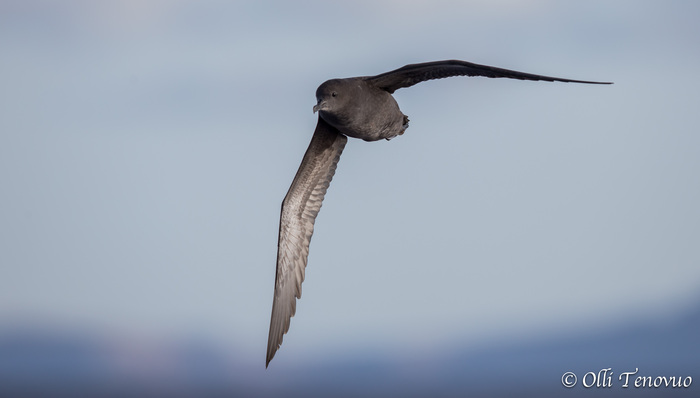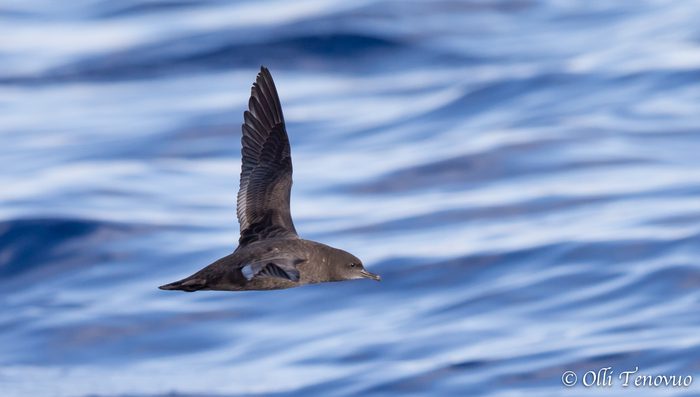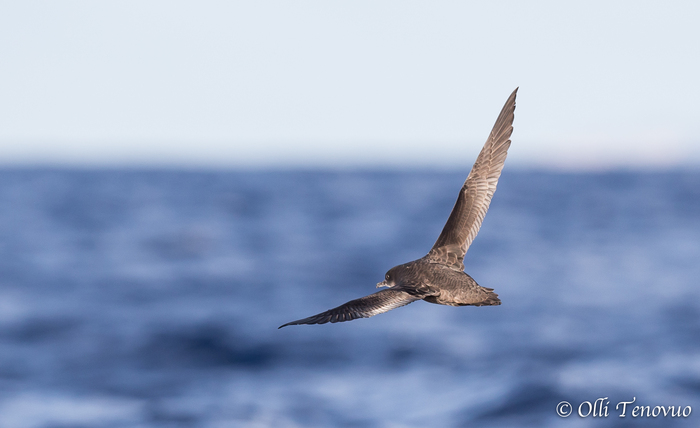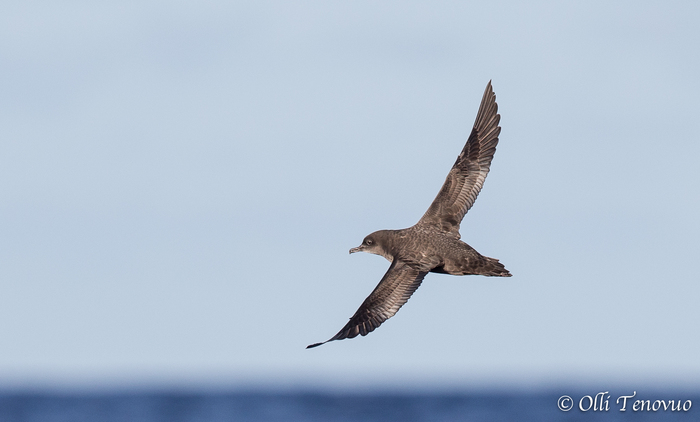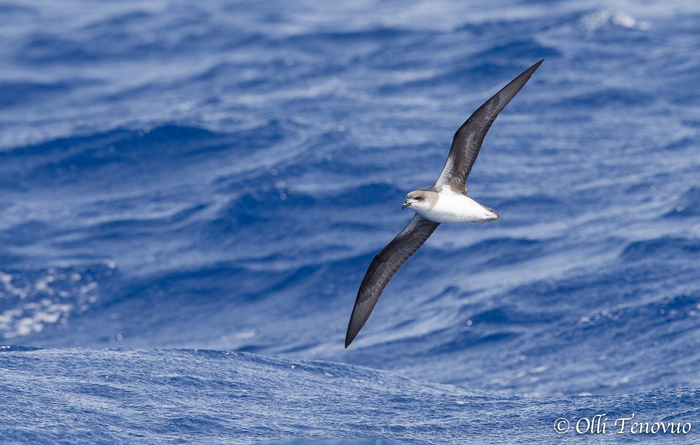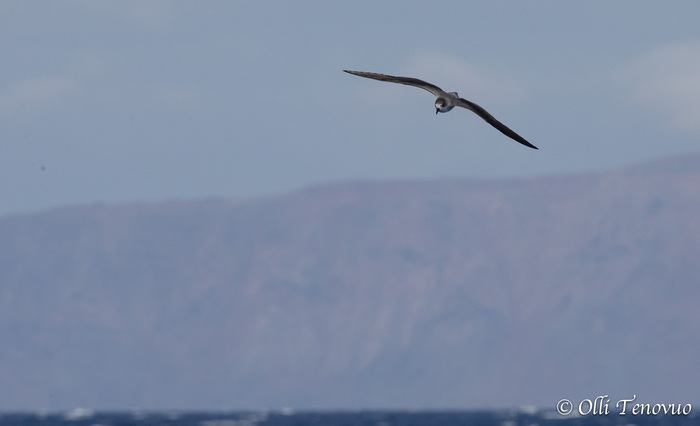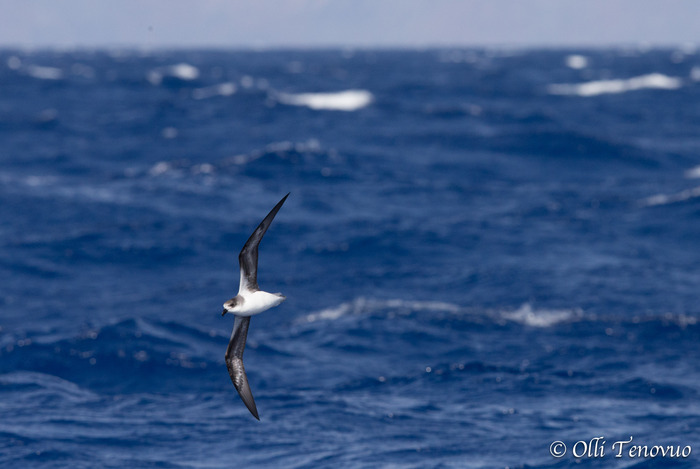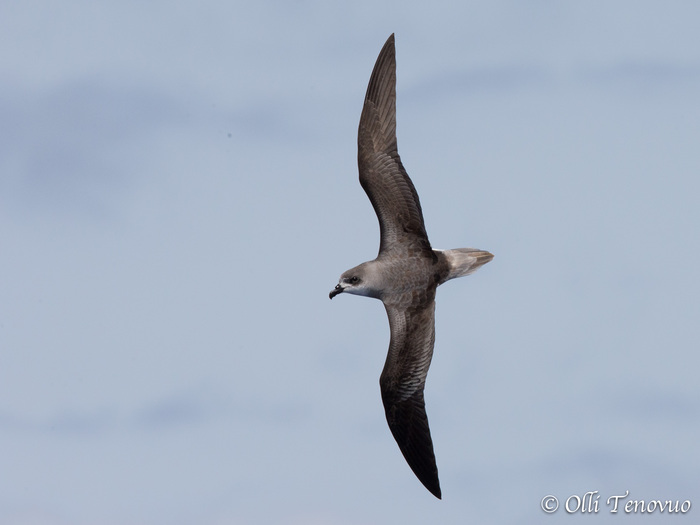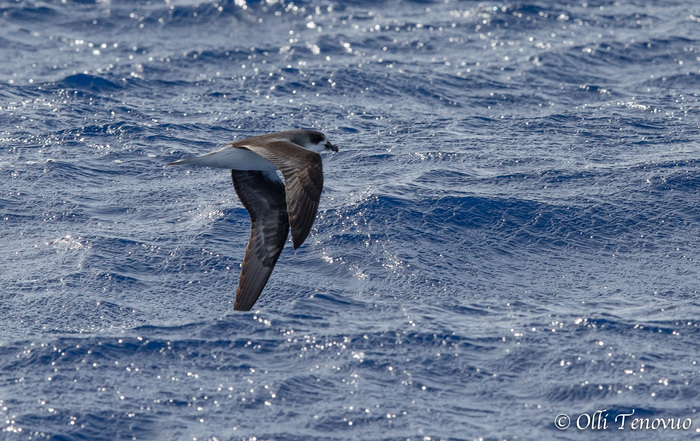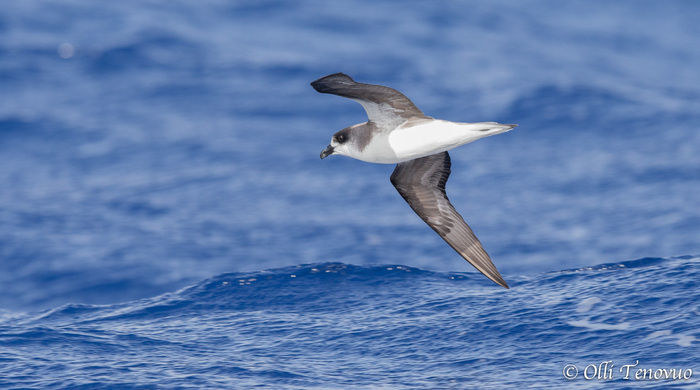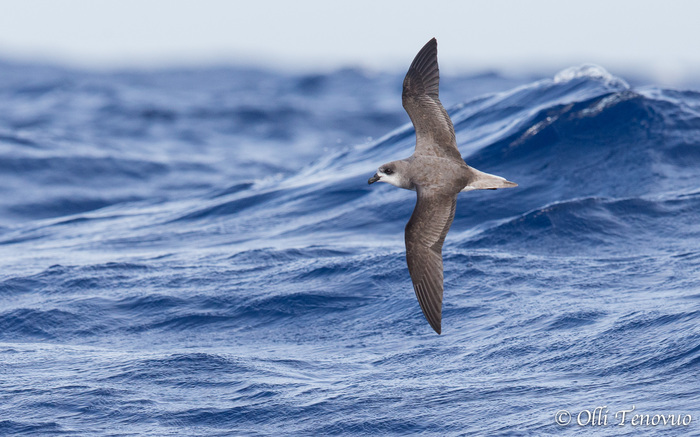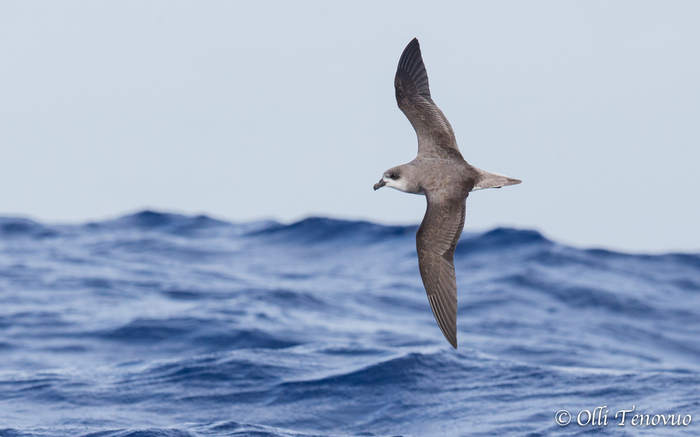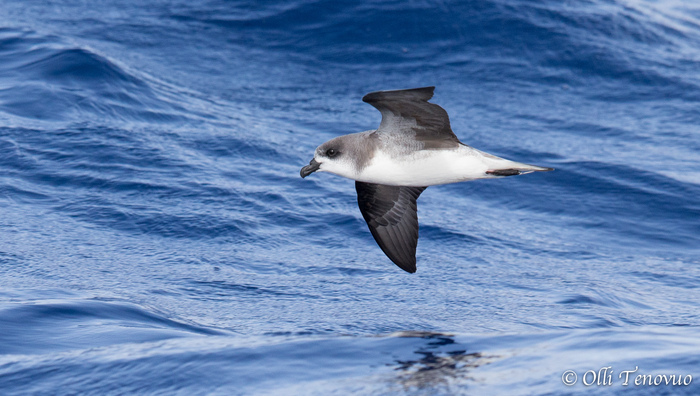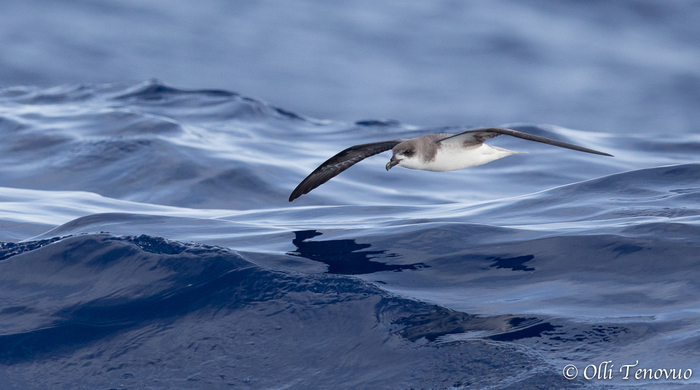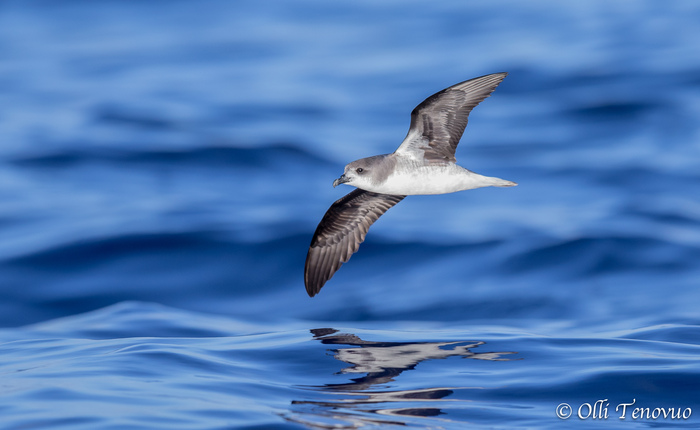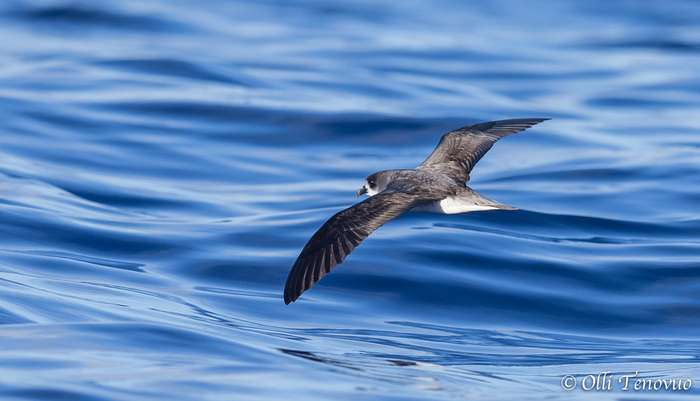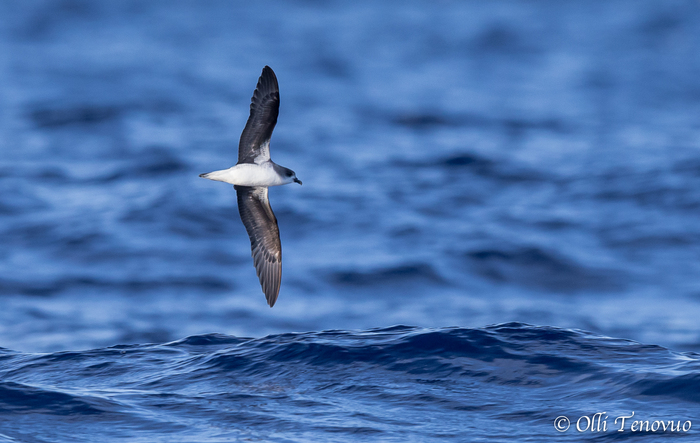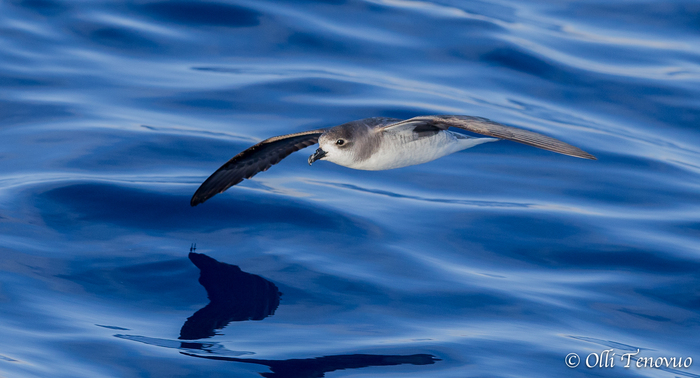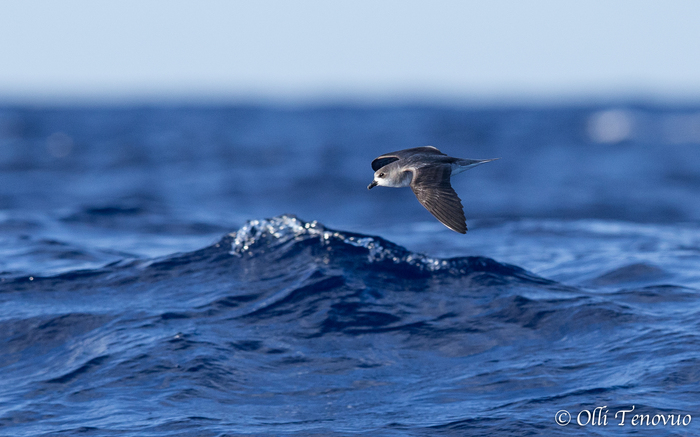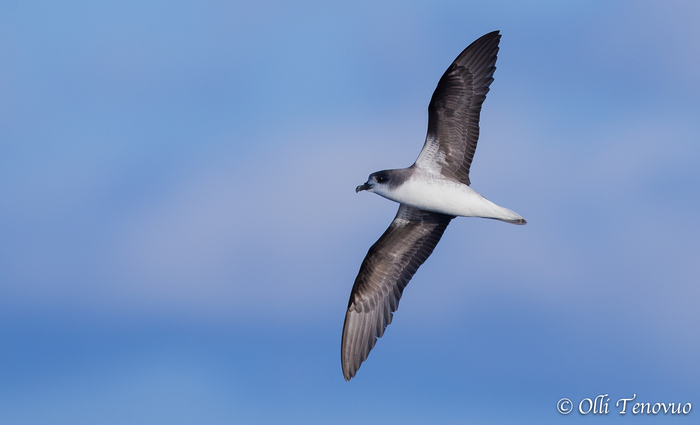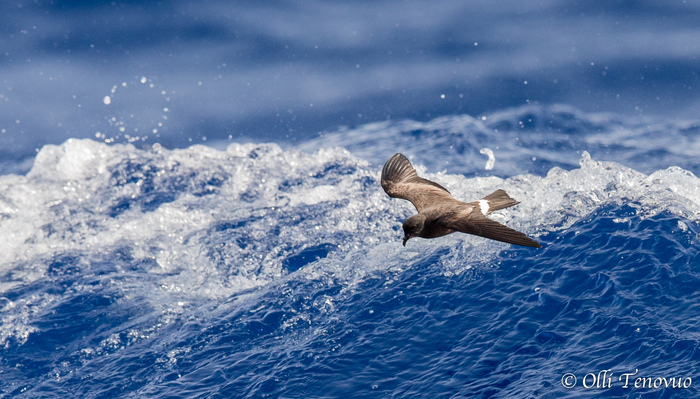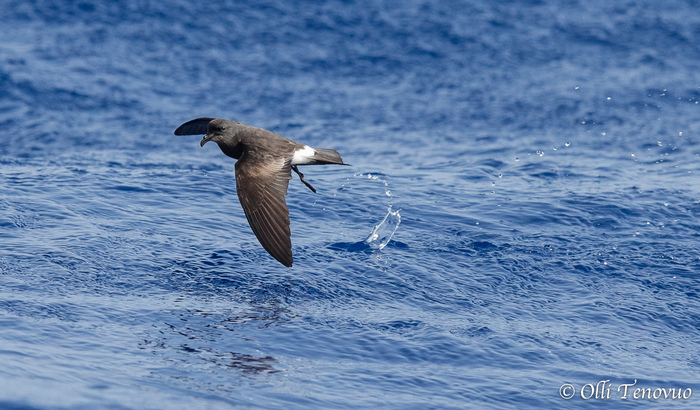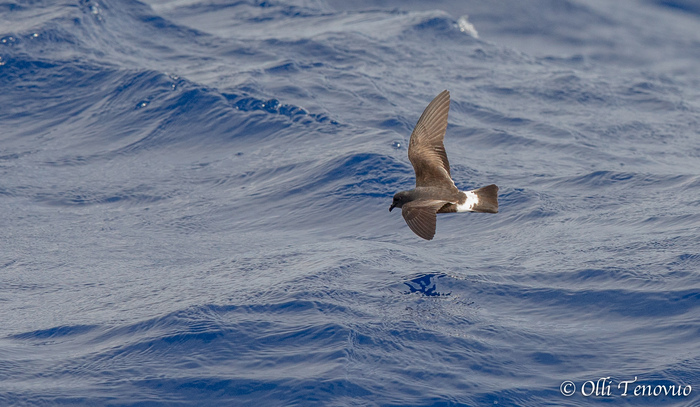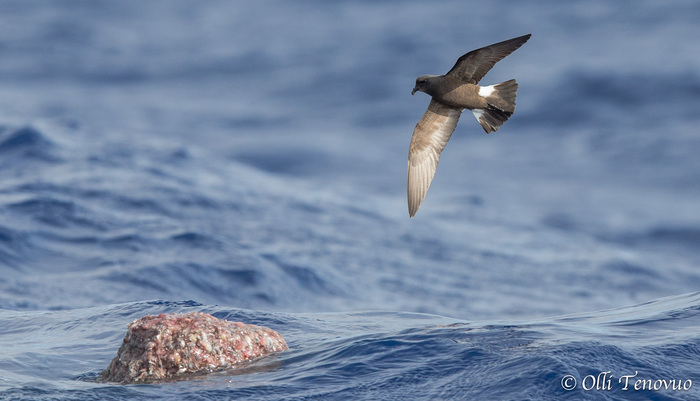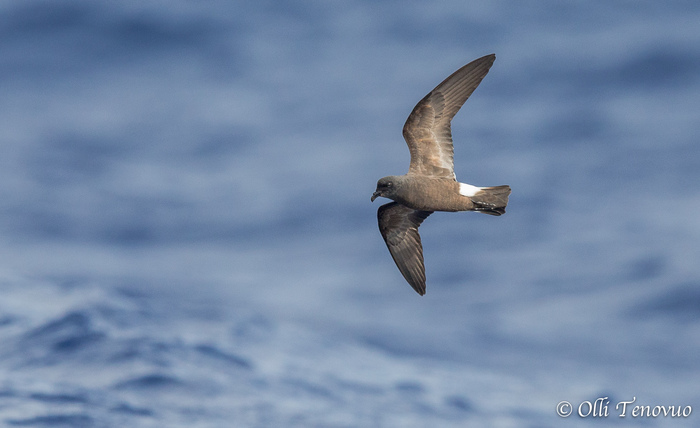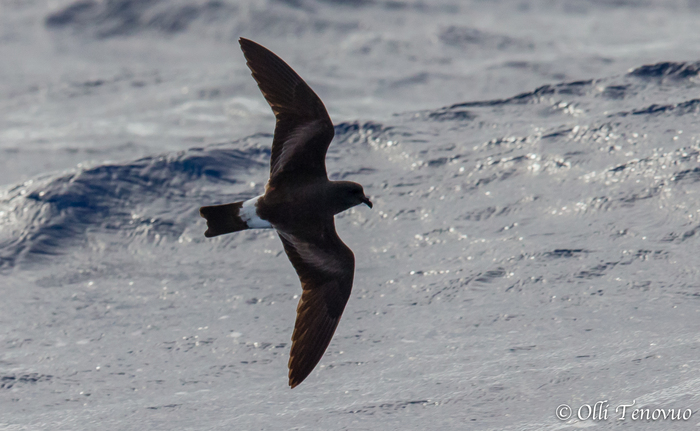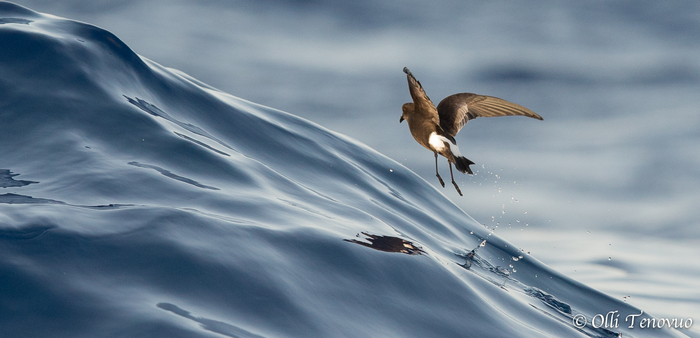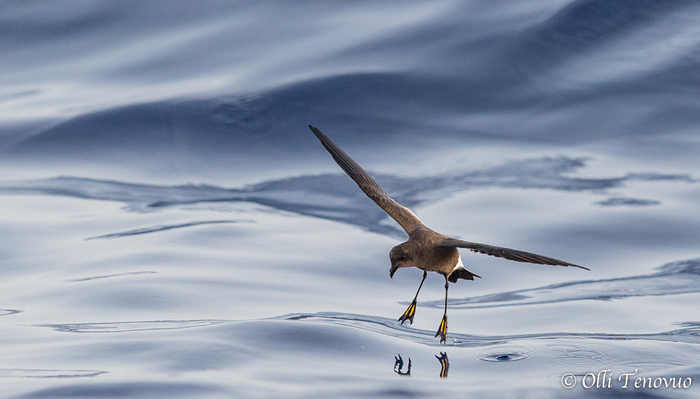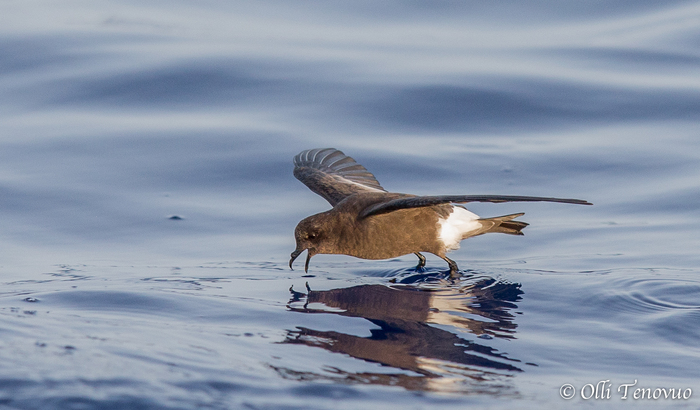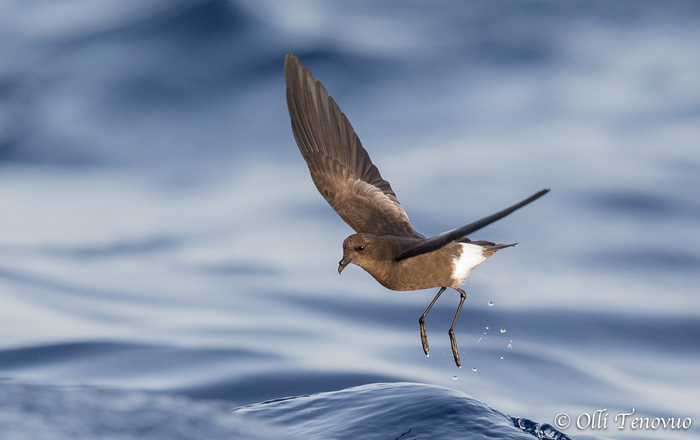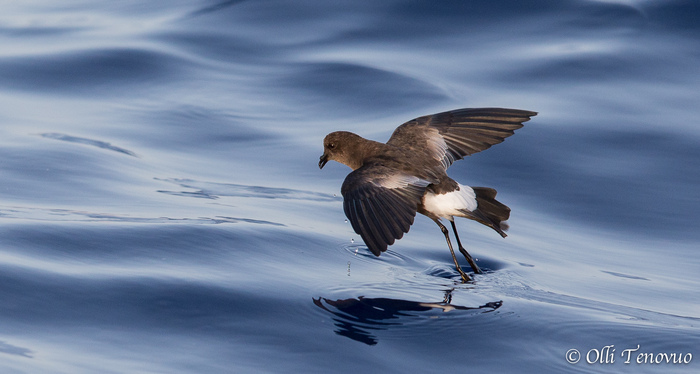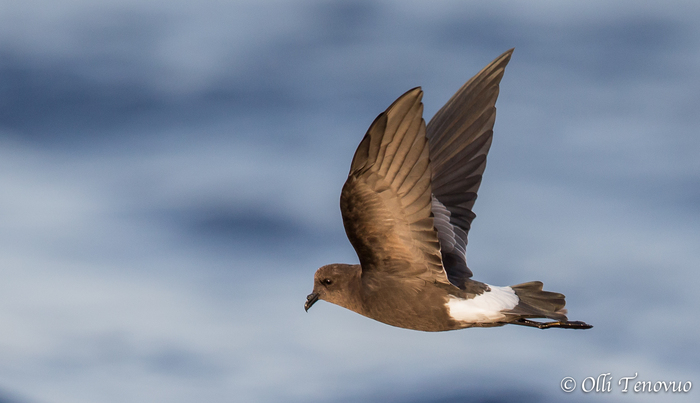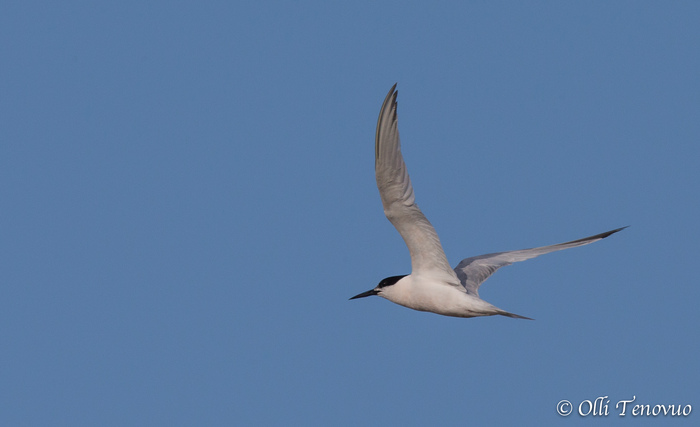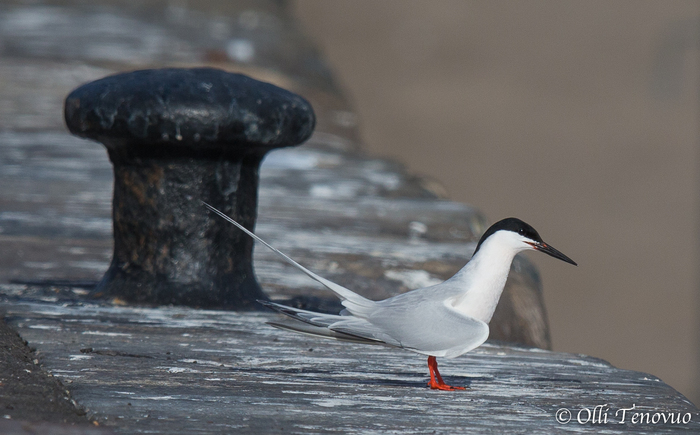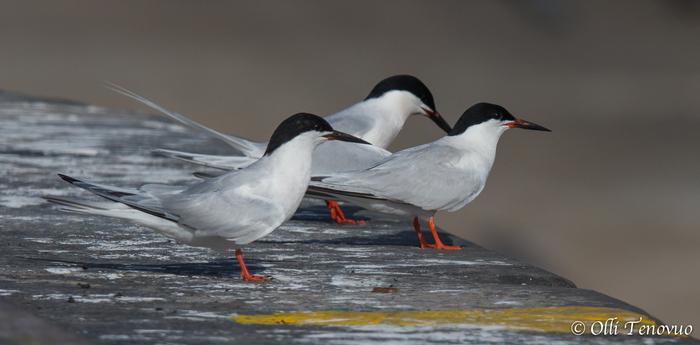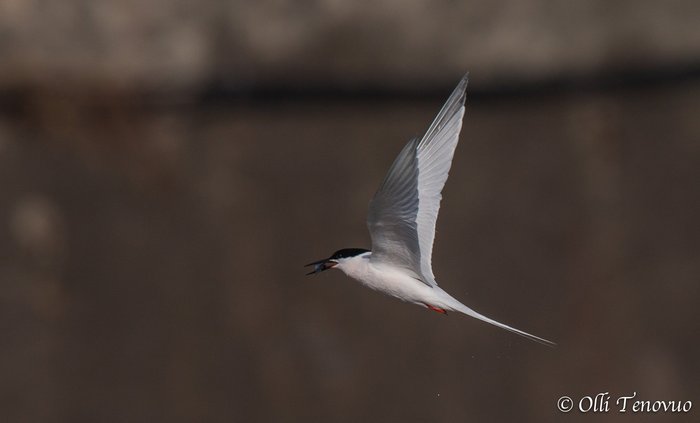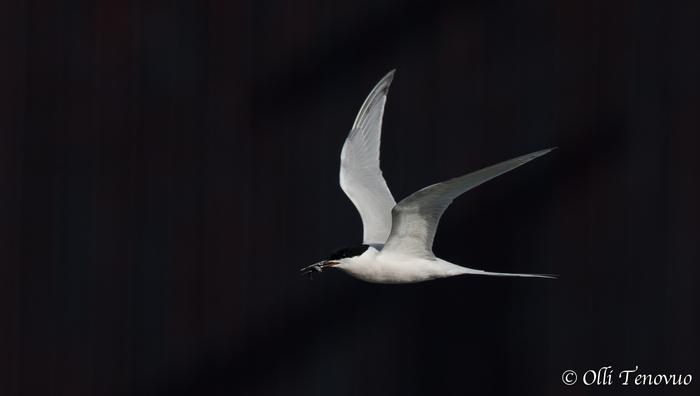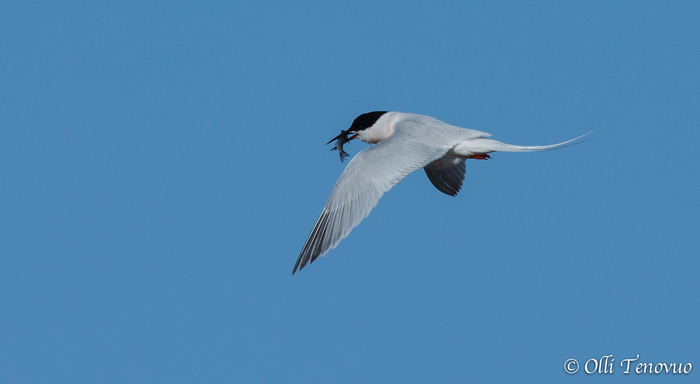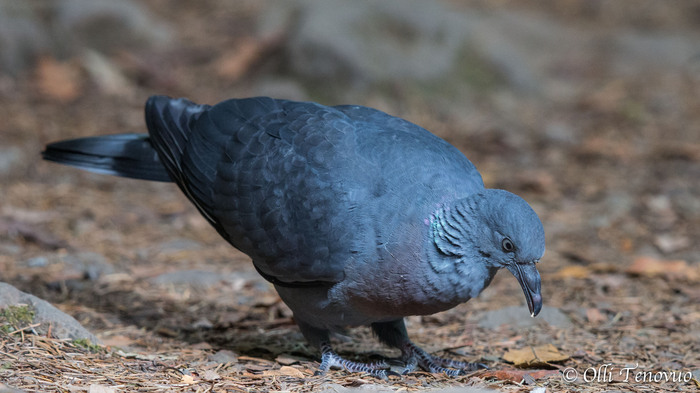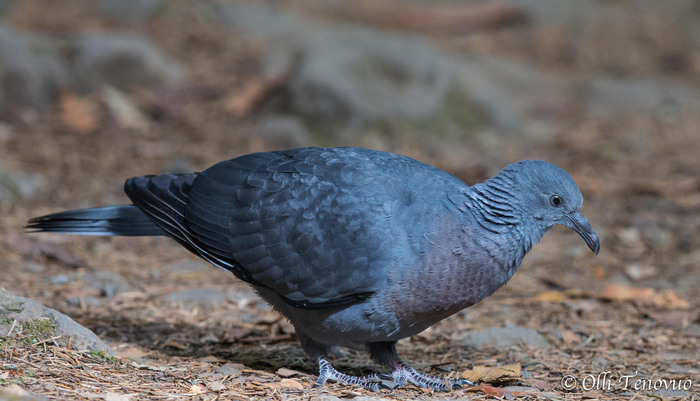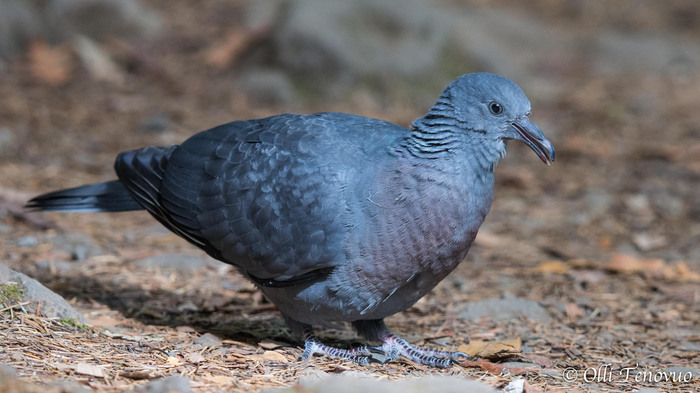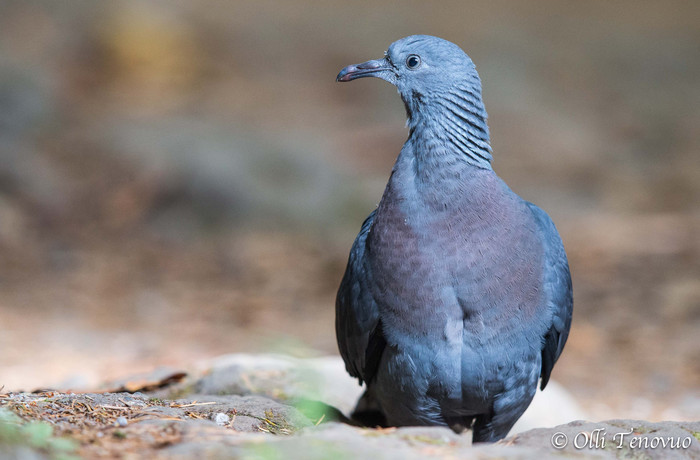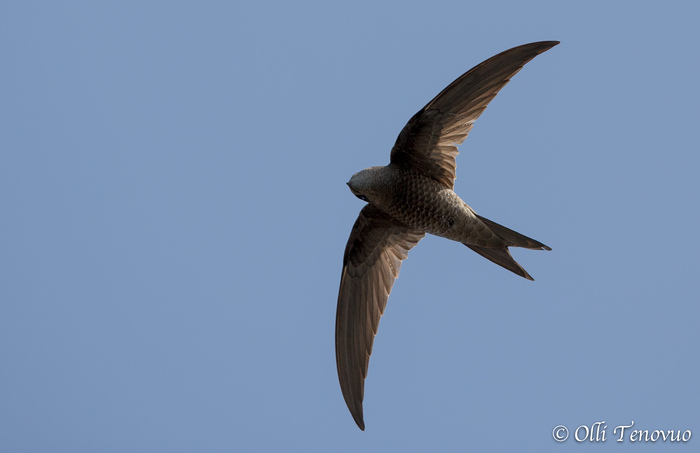Madeira - english versionBy clicking on the images you can enlargen them!PELAGIC BIRDING AT MADEIRA 1st – 3rd AUGUST, 2012 Together with my brother Jorma, Jukka Nurmi, Markus Varesvuo, and their spouses to Madeira aiming at productive seabird photography. The trip was the three-day “Zino’s pelagic birding”, organized by Catarina and Hugo from Madeira Wind Birds (www.madeirawindbirds.com). On each day we were at sea from 3 to 10 p.m., on the first day North, second day South, and third day East of Madeira (about 15 miles each day). After reaching the target site, the “chum” was poured over board and repeatedly twice thereafter each day with an interval of about two hours. Then, we drifted with the chum about two miles each day, trying to keep beside it and having the sun behind. Two German birdwatchers, Felix and Christian, accompanied us - thanks for company! We had overcast all days but the two latter were partly quite cloudy. The temperature was nicely about 25oC. Wind is important for seabirds as we came to see, the first day had the fewest birds and the lightest wind (about 3 Bf or 5 m/s), on both the second and third day the wind was stronger, about 5 Bf (10 m/s) from North-East. This produced more birds but also made us wet and put some challenge in photography since everything was moving: the photographers (in the swinging boat), the birds (and usually in a very quick and unpredictable fashion), and the background (the waves). We saw (and photographed!) almost all species on our wishing list, despite the White-faced Storm Petrel. However, to compensate that we had some surprises that were not so expected. Below you can find a description of those seabirds we managed to see and a selection of photographs.
Bulwer’s Petrel (Bulweria bulweri) – by far the most common seabird, each day we saw far over one hundred individuals. In practice the species was present at the chum all the time, by one or more individuals. Light conditions at sea were very variable affecting considerably the colouration of the birds, the general impact of Bulwer's Petrel is very dark In sunshine the general impact is very different, as well as the colour of the sea. In good light the lighter feathering on upper wing is clearly visible Bulwer's Petrel in backlight These birds are very skilful flyers and able to fly also very close to the sea surface Bulwer´s Petrel may look surprisingly different in variable conditions, compare e.g. to the photo above "Chum" leaves an oily surface which creates a photographic background When the boat is on the bottom of the wave you may get nice photographic arrangements with sea, sky, and birds There is something dove-like in the Bulwer's Petrel, but in some conditions it is reminiscent of a Storm Petrel and sometimes it may give a Swift-like appearance Although Bulwer's has very long wings, in some positions the effect is very different Light conditions were generally very good for photography Getting into flight from sea surface is easy Sometimes Bulwer's Petrels jump on the surface in a Storm Petrel fashion, and may thus be confused with dark-rumped Storm Petrels Something edible has been found Here a Bulwer's Petrel is standing on the surface like a Storm Petrel Cory’s Shearwater (Calonectris diomedea) – Cory’s was another numerous and visible species, which was actually more abundant than Bulwer’s Petrel on the open sea after the shoreline. Not as interested in chum as Bulwer’s but still seen close to the boat quite often. Altogether we saw hundreds of Cory’s. Cory's Shearwater is a magnificent bird although from a distance may give a gull-like appearance Cory's is much easier target for photography than Bulwer's, both because of size and contrasts This photo is not in a wrong position, the bird is rounding The back has fairly obvious scaled apperance, the legs are pink Coming straight towards the camera, with tubenoses well visible The underside is very white, whereas the upperside is fairly dark Here you can compare the general effect to the photo above Obviously it doesn't matter if the wingtip shears the surface Cory's gliding in backlight Sea, sky and seabirds - we enjoyed these a good stuff but could have enjoyed even more A typical gliding position above the surface One of the last Cory's of the trip in the evening lights of Friday Sooty Shearwater (Puffinus griseus) – one of the surprises, on the first day one bird was circling around the boat for a while, letting everybody to take pictures. According to its name, Sooty gives a very dark impact The bird is actually dark brown but from a distance or in poorer light conditions may appear black Wing underside is the only region where there is some lighter feathering, as can be seen The arm has also a lighter border which can be seen only from certain angles In strong light the general apperance is surprisingly different Sooty Shearwater was a nice surprise in these waters at this time and further still it circled around our boat for a while Manx’s Shearwater (Puffinus puffinus) – the only seabird we did not succeed to capture in photos. On the first day one individual came from the North passing by quickly to the South. Fea’s Petrel (Pterodroma feae deserta) – the exact species of the Soft-plumaged Petrels seen is still under examination but apparently most were Fea’s, of the subspecies deserta. We saw altogether about 15 Soft-plumaged Petrels and got decent photos of most of them. The birds below are probably all Fea's (Deserta's) Petrels. Soft-plumaged Petrels are very elegant birds Deserta's Petrel, their breeding site Desertas in the background Here we a good seabird atmosphere and you can see also the weather on Thursday The best difference from Zino's Petrel is the thick bill which is quite well visible here A Soft-plumaged Petrel in backlight, this individual has a fairly intermediate bill and may be impossible to identify with certainty Maybe the rarirty is one cause for the attractiveness but these are also very beautiful birds This is a typical Deserta's Petrel with a very thick bill The same bird as above Here you can see the heavy bill clearly, cf. to the Zino's later on This individual is from the last day, with the bill of similar size Zino’s Pterel (Pterodroma madeira) – on the first day we saw only one bird of this species group and this was definitely a Zino’s. Whether we saw other Zino’s too is not yet clear. This species is critically endangered and the whole world population breeds on the mountainous parts of Madeira and is estimated to about 100 pairs. For those interested in Pterodroma identification, photos of the different individuals we managed to photograph can be found here. I will add species information after obtaining expert opinions on these individuals. Zino's Petrel, the bill is thinner and general appearance less bulky The darkness of the upperside is greatly influenced by light The best site to see Zino's is North to Madeira, why we headed there on the first day
Here you can see the bill structure well All Soft-plumaged Petrels have a strikingly rounded head Zino's against the sky, some individuals have much more white on the underwing than this one Madeiran Storm Petrel (Oceanodroma castro) – sparser than expected, on the second day we saw three and on the third two individuals, with some photographic success especially with one individual on the second day. All Storm petrels appeared suddenly, without anyone seeing them to arrive. Here a Madeiran Storm Petrel in a typical flight position.
Storm Petrels typicall bounce on the sea Ashtonisingly, one of these has been found in Finland, too Madeiran Storm Petrel by the chum There were few possibilities to train Storm Petrel identification, later in the Autumn also Leach's Strom Petrels appear on these waters In this backlight photo you may see all typical identification features of a Madeiran Storm Petrel Wilson’s Storm Petrel (Oceanites oceanicus) – one of the most delighting surprises and compensated nicely the missing White-Faced. Appeared during the last evening at the chum and spent the rest of the evening there, dancing on the sea surface for us to admire. Wilson's is a true fairy, bouncing on the surface all the time
Here you can see both the typical stance and the diagnostic yellow webs Wilson's feeding The bird was very active and jumped from the surface every now and then moving a bit forward Here you can see well the upperside and rump In this flight photo you can see the long legs Pomarine Skua (Stercorarius pomarinus) – on the second day on individual migrated to the South, quite far away (nicely spotted by our German friends).
Roseate Tern in flight, a rosy tone is slightly visible on the belly Roseate Tern on the Funchal harbour pier
And here with fellow individuals Apparently there was a juvenile on the sea side because the bird took fish there Against a very dark background a silvery white tern is difficult for correct exposure Here a Roseate Tern with fish on a more ordinary background Madeiran Pigeon Columba trocaz – not very rare in the mountainous areas but difficult to find and especially to take photos, usually shy. We had an unexpected luck as can be seen! Incredible luck, a "wary" Madeiran Pigeon feeding on the levada in about 10 yards distance!
On the ground there is no white visible Apparently there are few good photos of this species, stays mainly in thick forests and up in the trees As the levada was filled with tourists, all planets were in the right position, even the light in the usually quite dark levadas was good at this point Madeiran Swift Apus unicolor – Swifts were common but it remained a bit unclear how many of them were Madeiran and how many Pallid Swifts, both were common. The clearest separating feature to Pallid Swift is the more deeply forked tail Our warmest thanks are to Catarina and Hugo for their professional and friendly guidance. For those who want to see pelagic birds at a close distance and to photograph them within the WP region, this is probably the best option. The advices that are sent by the guides before the trip we recommend to follow closely. More pictures you may find from my photo album: http://www.ollitenovuo.com/albumi/www.ollitenovuo.com/kuva-albumi/lintukuvat/www.ollitenovuo.com/kuva-albumi/lintukuvat/uusimmat/ or from my brother's webpages: http://jtenovuo.1g.fi/kuvat/Uusimmat+ulkomailta++-+Latest+abroad/ |

